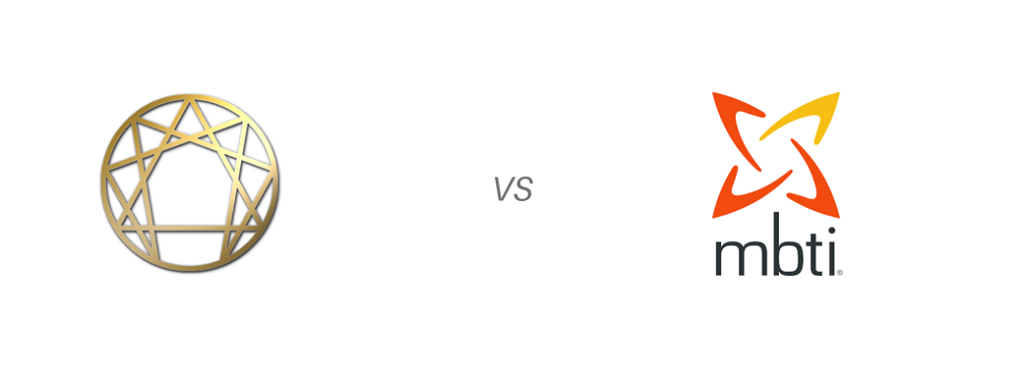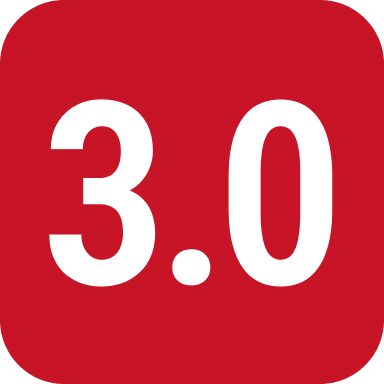
Are you curious about comparing the Enneagram system vs. the Big Five system? In today’s world, understanding oneself and others is crucial for personal growth and building relationships. Two prominent personality frameworks that have gained popularity in recent years are the Enneagram and the Big Five systems.
In this article, we’ll comprehensively compare these two intriguing models, exploring their origins, methodologies, and applications.
By the end, you’ll have a deeper understanding of both systems and be better equipped to determine which resonates with you the most. So, let’s get started on this fascinating journey of self-discovery!
Systems Compared: The 9 vs. The 5 Type
The Enneagram system consists of nine distinct personality types, each represented by a number from one to nine. The Big Five test, on the other hand, describes personalities with five core traits that are divided into Extroversion-Agreeableness-Conscientiousness-Neuroticism-Openness to Experience (EACNO).
While the Big Five system focuses on traits that people possess, the Enneagram system is concerned with patterns of behavior and thinking. Each type in the Enneagram has specific behaviors, which can help individuals understand their motivations and why they act in certain ways.
Compared to HIGH5
On the other hand, the HIGH5 Strengths Test is based on a combination of theoretical and applied research approaches from positive psychology. Developed with the mission of helping people understand and appreciate themselves and each other, the test identifies universal human strengths.
Comparing the 9 and 5 type test vs. the HIGH5 Strengths Test, one can say that while the former focus on identifying personality traits and behaviors, the HIGH5 Strengths Test seeks to uncover an individual’s core strengths. This strengths test allows individuals to gain insight into their unique value, enabling them to use their strengths more effectively in various aspects of life.
Categories and Structure: 4 Domains VS Range
The BIG FIVE and Enneagram tests are based on 1-10 or 1-9 values, respectively. While both tests have a broad spectrum, they fall into four distinct domains.
The first domain is the Internal Domain, which deals with internal behavior and emotions, including self-awareness, creativity, integrity, and independence. The second domain is the Interpersonal Domain which deals with relationships, such as communication skills, empathy, social intelligence, and networking ability.
The third domain is the Achievement Domain which focuses on motivation and ambition, including drive for success, focus on goals and objectives, problem-solving abilities, and time management skills.
Lastly, there is the Adaptive Domain which deals with changeability in terms of agility to learn new things quickly and flexibility when dealing with different situations.
Together these four domains form a comprehensive picture of an individual’s personality and behavioral tendencies.
The BIG FIVE and Enneagram tests can identify strengths, weaknesses, and areas of improvement to help people reach their fullest potential. This type of assessment is useful for employers regarding hiring decisions or team-building exercises.
It can also be helpful for personal growth as a tool for self-reflection and understanding one’s negative or positive character traits and how they impact relationships with other people.
Ultimately, by understanding these domains and their associated range, individuals can gain insight into their behavior patterns that will help them develop better habits that lead to improved performance in all aspects of life.
Compared to HIGH5
Compared to the HIGH5 strengths test, the BIG FIVE and Enneagram tests are different in that they emphasize personality traits instead of skills.
The HIGH5 focuses on identifying the areas of strength a person has to bring to the table to develop and improve those areas. At the same time, The other two tests focus more on understanding an individual’s personality type and how it affects their behavior.
All three tests have their own merits but for different applications. It is important to understand each one when determining which assessment would be most beneficial in any given situation.
What Do Results Tell You? Personality Types VS Personal Characteristics
Results from a personality type test can tell you about your characteristics. Different personality types have other tendencies and behaviors, so understanding your style can be a great way to gain insight into how you interact with the world around you.
For example, considering the Enneagram system and the Big Five model can help you gain insight into how you think and feel about yourself and your relationships with others. With the Enneagram system, understanding your type can help you recognize growth areas to become an even better version of yourself.
Similarly, understanding the Big Five Model can lead to increased self-awareness and an appreciation for different aspects of personality. Knowing your personality type can also provide insights into what career path might suit you best and how to navigate difficult interpersonal situations.
Ultimately, knowing your personality type and personal characteristics allows us to be more conscious of our behavior to make positive life choices.
Compared to HIGH5
Again comparing these tests to the HIGH5 Strengths test, results from this type of strengths-based assessment tell you not just about personal strengths, characteristics and tendencies but also offer insights into your unique qualities and potential. By understanding which areas come naturally to you, you can appreciate the talents that make you stand out from others and use them to their fullest advantage.
Knowing your strengths allows us to focus our energy on what we do best and create a life centered around those strengths. Knowing your HIGH5 scores can help guide decisions in various aspects of life, such as career path, relationships, lifestyle choices, and more.
Ultimately, this knowledge helps facilitate growth through increased self-awareness and appreciation for who we are.
What Do Tests Highlight? Extremes VS Differences
The Enneagram test highlights extremes in personality traits and differences between individuals. It places people into nine categories based on how their behavior and thinking patterns differ from the rest of the population.
These nine types are known as “enterotypes,” each one has its own distinct set of strengths and weaknesses that can be used to form a complete picture of an individual’s personality.
For example, some enterotypes may excel in certain areas, such as leadership or creativity, while others may struggle with social situations or stress management.
Understanding these extreme points in personalities makes it possible to understand better how individuals interact with each other and what strategies will work best for them to achieve their goals.
The Enneagram also highlights individual differences regarding values, beliefs, motivations, and how they approach relationships.
By understanding what is important to each person, it can be easier to determine which strategies will work best for them when attempting to form meaningful connections with others or make decisions that affect their lives.
Knowing the underlying value system of a person can also help develop more effective communication skills and allow two people to understand each other better.
On the other hand, the Big Five test highlights differences between individuals in terms of five broad personality traits: extraversion, agreeableness, conscientiousness, openness to experience, and neuroticism. Each feature comprises sub-traits that help form a complete picture of an individual’s personality.
For instance, a person who is high in extraversion may be friendly and talkative, while someone low in this trait may be shy or introverted. Similarly, a person high in agreeableness may be generous and trusting, while someone quiet in this trait could be distant or difficult to get along with.
Understanding these differences between people makes it easier to identify which strategies are best for communicating with them and their motivations when making decisions.
Compared to HIGH5
By using the HIGH5 test and the Big Five and Enneagram tests, users can gain an even deeper understanding of their personalities which can be beneficial when making decisions or forming connections with others. By comparing these three tests, individuals will be able to recognize their similarities and appreciate how their differences complement one another.
Why Is the Big Five Better Than the MBTI?
The Big 5 model of personality is a more comprehensive assessment than the Myers-Briggs Type Indicator (MBTI). The Big Five measures five key facets of nature: Openness to Experience, Conscientiousness, Extraversion, Agreeableness, and Neuroticism.
Furthermore, the Big Five has been developed from scientifically valid research in psychology and is based on established psychological theories. By contrast, the MBTI was created from an idea by Jung that lacks empirical evidence or scientific support.
The Big Five also provides greater detail when assessing individual personalities. Its five categories offer more nuances than the MBTI does with its four dimensions. Moreover, the Big 5 model has been widely tested and validated in multiple studies worldwide to ensure accuracy and reliability.
On the other hand, many experts question whether or not the MBTI is an accurate tool for identifying individual personalities due to its lack of empirical evidence.
Overall, the Big Five personality assessment model offers a much broader and more detailed view of an individual’s character than the MBTI provided. With its deeper insight into people’s personalities and its firm grounding in scientific evidence, it is preferable for those seeking a comprehensive evaluation of their character traits.
Is Enneagram More Accurate than MBTI?
While both these tests are popular, it can be difficult to determine which is more accurate in assessing a person’s personality.
When comparing the two, a key difference lies in their underlying theories. Enneagram is rooted in an old idea based on nine distinct personality types, each with strengths and weaknesses. Conversely, MBTI draws from Carl Jung’s work and includes four different preferences that offer 16 total combinations of personalities.
Enneagram has been used for centuries to understand our behavior and motivations. The nine distinct categories allow for more detail when understanding people than the 16 MBTI categories offer.
Additionally, Enneagram considers how personalities may change over time while providing details on how individuals interact with and influence one another. This makes it helpful for identifying potential conflicts within relationships or teams.
In contrast, while MBTI is popular due to its simplicity and broad scope of application across various settings such as career counseling or team building activities, it does not provide as much depth as Enneagram does when understanding an individual’s unique traits and behaviors.
As such, Enneagram often offers more accuracy when providing insights into one’s personality type than MBTI does.
Is Big Five More Accurate Than Myers-Briggs?
It depends on who you ask and what evaluation criteria are used. The Myers-Briggs Type Indicator (MBTI) is based on Carl Jung’s typological theories and has existed since the 1940s. The Big 5 model, also known as the Five-Factor Model (FFM), is a newer model rooted in empirical observation of human traits.
When it comes to accuracy, there are pros and cons for both systems. The MBTI is criticized for its binary approach to personality types, while the Big Five refers to distinct personality traits that can exist in varying intensity levels. This means that the Big Five could be seen as more accurate than the MBTI when measuring an individual’s unique combination of personality traits.
However, some researchers suggest that the MBTI might be better suited for describing people’s general behavior patterns. At the same time, the Big Five might be better for predicting how someone may respond or behave in certain situations.
Regarding reliability, research suggests that both models have comparable results in consistency over time and across different populations. As far as validity is concerned, neither system has been universally accepted by experts.
However, studies have found evidence that both can predict behavior patterns such as job performance or relationship satisfaction with moderate accuracy.
Both systems have their merits and limitations when evaluating individual character traits; therefore, which is “more accurate” is ultimately up to personal preference and choice of evaluation criteria.
Is Big Five Acientifically Accurate?
The Big 5 model of personality is one of the most widely accepted and used models of nature in the scientific community. This model proposes five broad traits, or dimensions, that make up an individual’s personality: openness to experience, conscientiousness, extraversion, agreeableness, and neuroticism. Research has found that these traits explain much of the variance in how people think, feel, and behave.
However, there are still some limitations to the Big 5 model. It does not account for all aspects of human personality or behavior. Additionally, while it may be useful for understanding general trends in how people behave and perceive the world around them, it does not necessarily explain why individuals exhibit certain behaviors or respond to certain situations in specific ways.
Despite its limitations, research into the Big 5 suggests that it is generally reliable and valid when measuring personality traits across different contexts and cultures. Studies have found good correlations between responses on self-report measures of personality and actual observed behavior in naturalistic settings and laboratory experiments.
In addition, research has shown that scores on self-report tests tend to be consistent over time for a person. This implies that a person’s traits are relatively stable over long periods.
The Big 5 model accurately represents human personalities in many different contexts. However, some limitations should be noted when using this framework for scientific research purposes.
Conclusion
The Big 5 and Enneagram have distinct differences in their number of types, usage of categorization, core motivations, and assessment methods. By combining insights from both systems, users can better understand themselves and make informed decisions on managing their lives best.
Users can gain insights into their personality traits more deeply and comprehensively through its multi-dimensional approach. They can also use this information to identify potential areas for development or growth and develop strategies that support strengths and weaknesses.
Ultimately, both systems offer valuable tools for self-discovery and personal growth. With an understanding of each system’s distinct features, users are better equipped to make the most of these powerful systems.
Disclaimer: All trademarks mentioned on this page or any other page on the StrengthsTest.com website are the property of their respective owners, who may or may not be affiliated with HIGH5 Test. The information presented about the companies and their services is for informational purposes only and should not be construed as endorsements or criticisms. Displayed information is collected from public sources and, therefore, is subject to a degree of error where any updates or changes may not be immediately reflected. Please contact the editorial team if any of the provided information needs correction.


